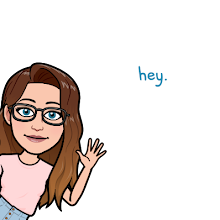Our Eleanor: A Scrapbook Look at Eleanor Roosevelt's Remarkable Life
by Candace Fleming
Bibliography:
Fleming, Candace. Our Eleanor: A Scrapbook Look at Eleanor Roosevelt's Remarkable Life. New York: Atheneum Books for Young Readers, 2005. ISBN 9780689865442
Plot Summary: Fleming creates a "scrapbook" biography of Eleanor Roosevelt's life so that fans and readers may get a closer and more in depth look into her life. The book covers everything from Eleanor's schooling to the speeches she made once she was in the position as First Lady. The book describes the countless ways that Eleanor has effected the lives of the entire nation, from helping those in poverty with low-cost housing, to taking care of her own grandchildren. We get a look in Eleanor's life in and outside of the White House.
Critical Analysis:
Candace Fleming is another author that I did not know much about before getting into this module. While I do my best to read a lot of nonfiction, especially those books written specifically for young adults, this author is one that was not on my radar. After finding this book, I quickly realized that Fleming has written many biography style books, many in this same "scrapbook" style. My librarian informed me of how great her writing is, and how knowledgeable she seems, and I have to agree. The number of books would be proof enough, but Fleming does seem to have a wonderful reputation. However, if reputation is not enough, Fleming has included almost twenty pages of sources in the back of her book, and a note about the sources that she used. In the source notes, Fleming noted that she went to the Franklin D. Roosevelt Library in Hyde Park which has the Anna Eleanor Roosevelt Manuscript Collection that "includes two million pages of private letters, diaries, office files, memoranda, invitations, scrapbooks, pamphlets, magazine articles, newspaper clippings, and much more" (Fleming, p. 160). With so many first-hand documents, it would be impossible to deny the accuracy of which Fleming completed this book.
The design of this book could have easily become overwhelming for readers, especially younger readers, if Fleming had not been so deliberate at how she set up the book. The book is bigger than most books, and so the pagers are bigger and offer more space for text. Instead of filling every page with just text alone, which would make for an overwhelming read, the pages are sectioned and divided off in ways that make the most sense. There are textboxes, most with their own subtitle so it is clear what that specific box is discussing. Some pages have three or four different boxes, allowing the reader to get plenty of information on each page, but without it being completely overwhelming. The book is also in chronological order, which makes Eleanor's life much easier to follow for readers. As far as the design goes, it is appealing to readers as well. There is a large number of graphics and pictures, and each is explained. There are not just pictures, however, but also letters, report cards, birth certificates, diary entries, and a plethora of other items that were written by or related to Eleanor and her life.
While the book is separated well, the style is more matter-of-fact than some of the other book selections in the module. The writing is not necessarily exciting or light because it is giving a great deal of facts. The details are interesting, though, which keeps the book from being boring despite the straight-forward style of the writing. Fleming's writing proves her interest and knowledge of the material, which makes it a much more enjoyable read.
Candace Fleming is another author that I did not know much about before getting into this module. While I do my best to read a lot of nonfiction, especially those books written specifically for young adults, this author is one that was not on my radar. After finding this book, I quickly realized that Fleming has written many biography style books, many in this same "scrapbook" style. My librarian informed me of how great her writing is, and how knowledgeable she seems, and I have to agree. The number of books would be proof enough, but Fleming does seem to have a wonderful reputation. However, if reputation is not enough, Fleming has included almost twenty pages of sources in the back of her book, and a note about the sources that she used. In the source notes, Fleming noted that she went to the Franklin D. Roosevelt Library in Hyde Park which has the Anna Eleanor Roosevelt Manuscript Collection that "includes two million pages of private letters, diaries, office files, memoranda, invitations, scrapbooks, pamphlets, magazine articles, newspaper clippings, and much more" (Fleming, p. 160). With so many first-hand documents, it would be impossible to deny the accuracy of which Fleming completed this book.
The design of this book could have easily become overwhelming for readers, especially younger readers, if Fleming had not been so deliberate at how she set up the book. The book is bigger than most books, and so the pagers are bigger and offer more space for text. Instead of filling every page with just text alone, which would make for an overwhelming read, the pages are sectioned and divided off in ways that make the most sense. There are textboxes, most with their own subtitle so it is clear what that specific box is discussing. Some pages have three or four different boxes, allowing the reader to get plenty of information on each page, but without it being completely overwhelming. The book is also in chronological order, which makes Eleanor's life much easier to follow for readers. As far as the design goes, it is appealing to readers as well. There is a large number of graphics and pictures, and each is explained. There are not just pictures, however, but also letters, report cards, birth certificates, diary entries, and a plethora of other items that were written by or related to Eleanor and her life.
While the book is separated well, the style is more matter-of-fact than some of the other book selections in the module. The writing is not necessarily exciting or light because it is giving a great deal of facts. The details are interesting, though, which keeps the book from being boring despite the straight-forward style of the writing. Fleming's writing proves her interest and knowledge of the material, which makes it a much more enjoyable read.
Review Excerpts:
From Publisher's Weekly: "Short chapters arranged into a pastiche of narratives and deftly supported by photographs, newspaper articles, letters and humorous cartoons explore how this sad "Little Nell," as her father called her, emerged from an unhappy albeit privileged childhood to become an indefatigable champion of the poor and powerless."
From School Library Journal: "Fleming weaves well-researched primary quotes and accounts into a mainly chronological narrative that touches upon Roosevelt’s fortes and flaws, accomplishments and controversies."
Connections:
-This book would be wonderful to use in a variety of lesson plans, whether it is learning about President Roosevelt and Eleanor during their time in office, or if it is a discussion of women's rights and women that have had a huge and positive impact on the country.
-Other books that could be paired with this title include: The Lincolns: A Scrapbook Look at Abraham and Mary, Ben Franklin's Almanac: Being a True Account of the Good Gentleman's Life, and Amelia Lost: The Life and Disappearance of Amelia Earhart all by Candace Fleming.





















